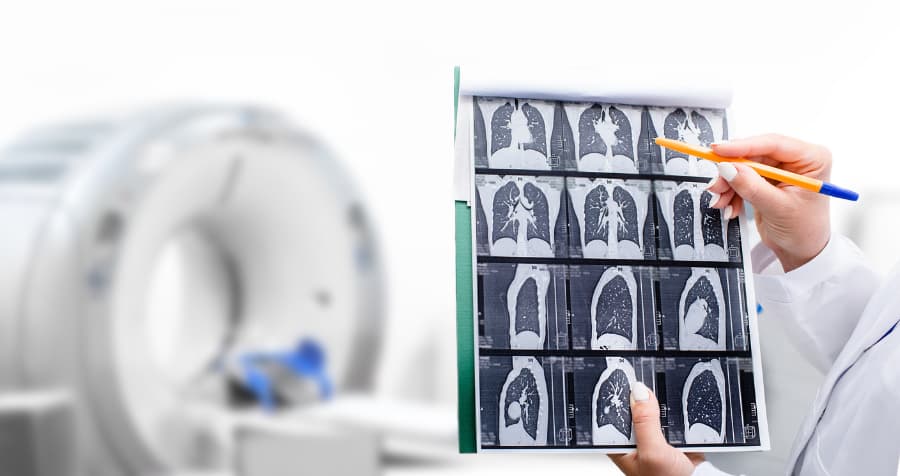Lung cancer refers to malignant (harmful) cancerous cells that develop in the lungs of the respiratory system. Non-small cell lung cancer is the most common type, making up a large majority of lung cancer diagnoses, while small-cell lung cancer is rarer yet known to spread quickly. The onset of lung cancer is usually linked to heavy smoking in older adults, heavy radon exposure, or working with or around cancer-causing substances like asbestos or coal.
Typically, lung cancer symptoms only appear after the disease has begun to spread. This makes it imperative to receive regular lung cancer screenings, as well as prompt medical attention should you notice symptoms indicative of lung cancer. Here are some of the signs and symptoms of lung cancer and when you should visit your physician.
The Most Common Symptoms
As lung cancer progresses, the disease may spread from the small cells found within the lungs, eventually affecting the lymph nodes, healthy tissue, and even other organs of the body. When this happens, patients commonly experience symptoms such as the following:
- Aches and pains when breathing
- Cough that persists and worsens after a few weeks
- Difficulty breathing
- Inexplicable weight loss and reduced appetite
- Lack of energy/always tired
- Recurring respiratory infections
- Coughing up blood
Less Common Signs
There are also a handful of less common symptoms that point to lung cancer. These may include the following and more:
- Dysphagia: Describes patients who experience difficulty swallowing liquids or foods, resulting in painful blockages in the throat or esophagus.
- Finger clubbing: Causing very low levels of oxygen in the blood, this symptom is identifiable by visible changes in the appearance of the fingers, such as nails sloping downward or enlarged fingertips.
- Prolonged chest and/or shoulder pain: If you experience new and lasting discomfort in this area that cannot be attributed to a physical injury, it is a sign to see your physician.
- Swollen face and/or neck: Unexplained swelling in the face or neck might be related to the presence of lung cancer.
It is important to note that both common and rarer symptoms of lung cancer can also have origins other than cancer or another underlying disease. The only way to know the cause of your symptoms is to visit your physician for an accurate diagnosis.
Knowing When to Make an Appointment
As with all types of cancer, the earlier it is detected, the better the chances are of a positive outcome from treatment. Do not wait for symptoms to worsen – schedule a consultation with your physician right away. At Richmond University Medical Center in Staten Island, New York, our oncologists are standing by to provide testing, diagnoses, and treatment plans for patients with lung cancer. For more information, contact us today.




